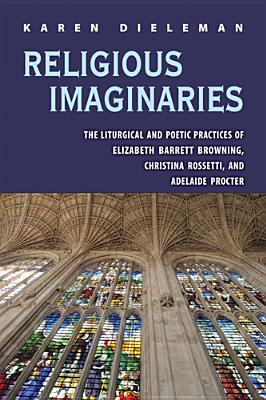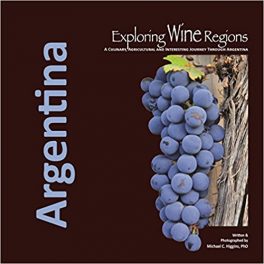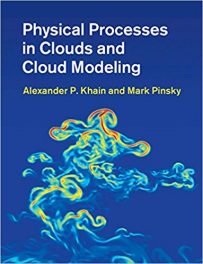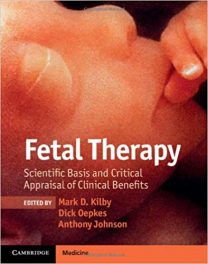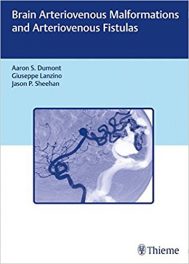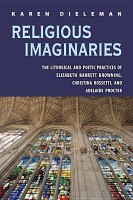 Author: Karen Dieleman
Author: Karen Dieleman
Publisher: Ohio University Press
Book Review by: Artha Hemrajani
This book studies three female Christian poets from the Victorian era in terms of their liturgy or public worship as compared to their poetry, and how they viewed the world and their place in it.
The book answers the question: how did their particular beliefs influence their poetry, particularly religious poems? And how much did those denominational beliefs help form their poetry?
The poets are Elizabeth Barrett Browning, Christina Rossetti and Adelaide Procter. With a total of six chapters in this book of 314 pages, two chapters are devoted to each poet, the first one in the pair describing their beliefs and the second one showing examples of such poetry.
This book sets you thinking by taking a second look at three assumptions:
- That the faith commitments of Victorian women limit their creativity
- That church experiences matter little for understanding religious poetry
- That gender is more important than liturgy in shaping religious poems
Karen Dieleman points out that each denomination of Christianity had its unique characteristics as shown in the three women’s poetry. As examples, Congregationalism held a high regard for verbal proclamation; Anglicanism and Anglo-Catholicism valued manifestation and Roman Catholicism placed importance on art, beauty and taste.
Elizabeth Barrett Browning was known to be a Congregationalist; Christina Rossetti an Anglican; and Adelaide Procter a Roman Catholic. Below we provide brief views of each poet’s religious beliefs. The quote marks are titles of the first of two chapters relating to the respective poet.
Elizabeth Barrett Browning: Congregationalism
“Truth and Love Anchored in the Word”
The author Karen Dieleman writes that this poet has been mistakenly aligned by other scholars with an earlier religious group “that has marred our perception of the importance of religion to arguably the most important woman of the period.” He explains that some people have read some of Browning’s remarks and jumped to conclusions that she has “distanced herself from her earlier commitment to Congregationalism.”
The author writes that she is correcting this wrong assumption by “aligning the mature poet and her remarks more closely with Congregationalism and its affiliates than others have done….I hope in doing so to advance our knowledge of Barrett Browning’s creativity, originality and skill as a writer of religious poetry.”
Christina Rossetti: Anglicanism
“The Beloved Anglican Church of My Baptism”
Karen Dieleman points out that like Congregationalism, Anglicanism also values the proclamation that “Jesus Christ is both the decisive word and the decisive manifestation of God and ourselves.”
So she writes in the first of two chapters on Christina Rossetti: “I do not therefore, in this chapter pitch Rossetti’s Anglican/Anglo-Catholic religious imaginary as diametrically opposed to Barrett Browning’s.” She points out several of the Anglican poet’s religious narratives such as A Ballad of Boding that “demonstrate the impulse toward prophetic warning characteristic of religious formations serious about proclamation.”
Adelaide Proctor: Roman Catholicism
“The One Divine Influence at Work in the World”
Here, Karen Dieleman re-asserts that religious beliefs have influenced the poets’ works.
She writes: “This chapter once again suggests that sustained practices have a powerful formative effect on how we imagine the world and our place in it, and consequently, on how we talk or write about it.”
The author presents evidence of this in this chapter which “investigates these complexities, showing that Procter’s religious imaginary enabled a multidimensional religious-poetic voice and a serious engagement with religious, social and political issues.”
This study comparing Christian denominational religious beliefs of three women poets with their poetry in the Victorian period is indeed a unique one to me – something that I have not encountered before. This book provides ample proof of their beliefs in their poetic passages. So the chief values of this work are: its uniqueness, and the solid evidence provided to uphold the thesis that belief is reflected in writing, especially in poetry.

